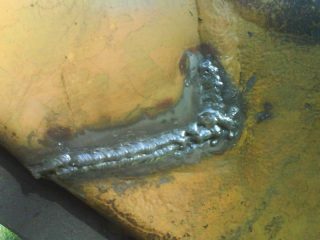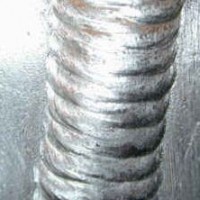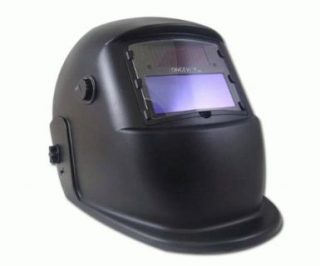There are 3 welding procedure mistakes that most new welders make that I want to share with you before you begin your journey on learning to weld.
If you follow what I say here and you don’t make these mistakes then your welding experience will go much more smoothly.
[elementor-template id=”13402″]
Welding Procedure Beginner Mistake #1:
Not controlling the heat and weld puddle resulting in poor weld penetration and poor weld strength.
No matter what welding procedure you’re using, whether it’s tig, mig, arc, or oxy acetylene welding, heat control is the thing to keep in mind.
Make sure that you always take your time and get good weld penetration.
If you rush the welding procedure and go too fast you will risk getting a cold weld with little to no penetration, resulting in a weak weld and possible weld failure.
You definitely don’t want a weld failure, especially if you’re welding structural things like railings or trailers.
Make sure that you’re going slow enough to get good, deep weld penetration, especially if you’re welding thicker steel.
If your welding procedure involves anything thicker than 1/8” steel then you definitely want to bevel the work piece so that you get maximum penetration of the weld through the entire piece.
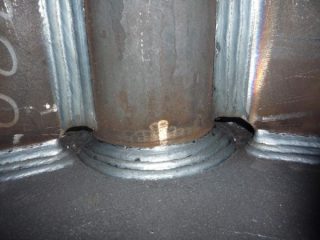
Since you’re just starting off welding you probably don’t really have a clue what kind of penetration your welds are getting on the metal, so the best thing to do is to perform a break test. What’s a break test?
It’s exactly as it sounds. Place one of your practice pieces in a vice, grab a hammer and see if you can manage to break the weld. If it breaks with little effort then you know you have a cold weld, with little penetration.
If you have a band saw you could also do a cross cut in the work piece to see how well your weld penetrated.
Whatever you do, just make for certain that if you’re welding something that is going to be used for structural purposes that you have practiced and are confident in your welding procedure abilities.
There is another fatal mistake that many new welders make that can not only cause ugly welds, but will also cause weld failure if done improperly.
Welding Procedure Beginner Mistake #2:
Not properly cleaning and fitting up the metal before welding, resulting in crappy weld appearance and poor strength.
Welding on painted metal, dirty metal, rusted metal, etc. is a HUGE no, no. I can’t tell you how many times I’ve seen this. Someone thinks that they’re just going to repair something and they don’t give a second thought about cleaning the metals surface.
Sloppy Weld
Nice Weld
It’s an absolute must that you clean the metal by either grinding off the rust, paint, oil, dirt, etc. before you lay down a weld bead. You do not want the impurities from those things included in your weld as it will weaken your welds.
Even if you’re working with clean metal there is a layer of mill scale that should be grinded off before welding. This layer of mill scale occurs as the steel is heated and cooled at the steel mill and it’s a very important part of the welding procedure that you remove this mill scale.
If you fail to clean the work piece before welding it will be more difficult to get good weld penetration because the rust, paint, dirt, etc. will take away heat from the actual surface of the metal and the weld.
You can accomplish metal cleaning by using an angle grinder, and with certain projects you might want to clean the metal surface with acetone before welding.
So, make sure you are using proper pre-weld cleaning techniques before you weld to ensure you get great looking welds with high strength.
There is one last mistake I want to share that I see way too many beginner welders making.
Beginner Welding Mistake #3:
Using improper safety precautions when welding, cutting, and grinding resulting in fatal damage to your body.
When you begin welding you’re going to be working with a lot of new equipment that you may or may not be accustomed to using. You’ll be using things like cutting torches, grinders, welders, drills, hot metal, etc.
The thing you want to keep in mind when welding is that safety is your best friend, and should come first ALWAYS!
You can easily hurt your eyes when welding because of the ultra-violet light that the arc welding process emits. You want to ensure that you have a welding mask with at least a #9 welding lens, and I recommend a #10 or #11 if possible.
The ultra-violet light can not only damage your eyes, it can also do a lot of damage to your skin as well. That’s why whenever you weld you need to make sure you have long pants, and a long sleeve shirt to protect you.
I recommend wearing some kind of boots as well. Steel toe boots would be ideal.
Make certain you don’t have any synthetic clothing on like a jogging jacket or pants because those materials will melt right to your skin if you get a hot spark on you.
I’ve seen the shows on TV like American Choppers where those guys just weld without proper arm protection, and many times they don’t have a mask on, welding with closed eyes.
This is really setting a bad safety example for people who are just learning to weld. Don’t do as they do. Put safety first always.
You will also likely be working with a grinder at some point, and those can get very loud and emit a lot of sparks.
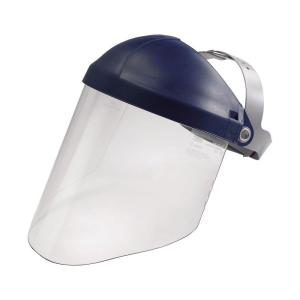
Since I began welding I’ve been burned by hot metal many times. A couple of times I just forgot I wasn’t wearing my leather welding gloves and I picked up a piece of hot metal with my bare hand. It hurt, so just make sure you have some good gloves and a pair of pliers to pick up the hot metal.
Lastly, I want to talk about oxy acetylene. Since you are new to welding you may not have an oxy acetylene setup just yet. However, when you do get one just make sure you use precautions when working with it.
The gases are kept under extremely high pressure, and if you improperly handle an oxygen bottle it can be very unsafe. I’ve been lucky to never have an issue with my oxy acetylene setup, but I’ve seen videos where they’ve either blown up or shot off like a rocket due to improper storage or handling.

